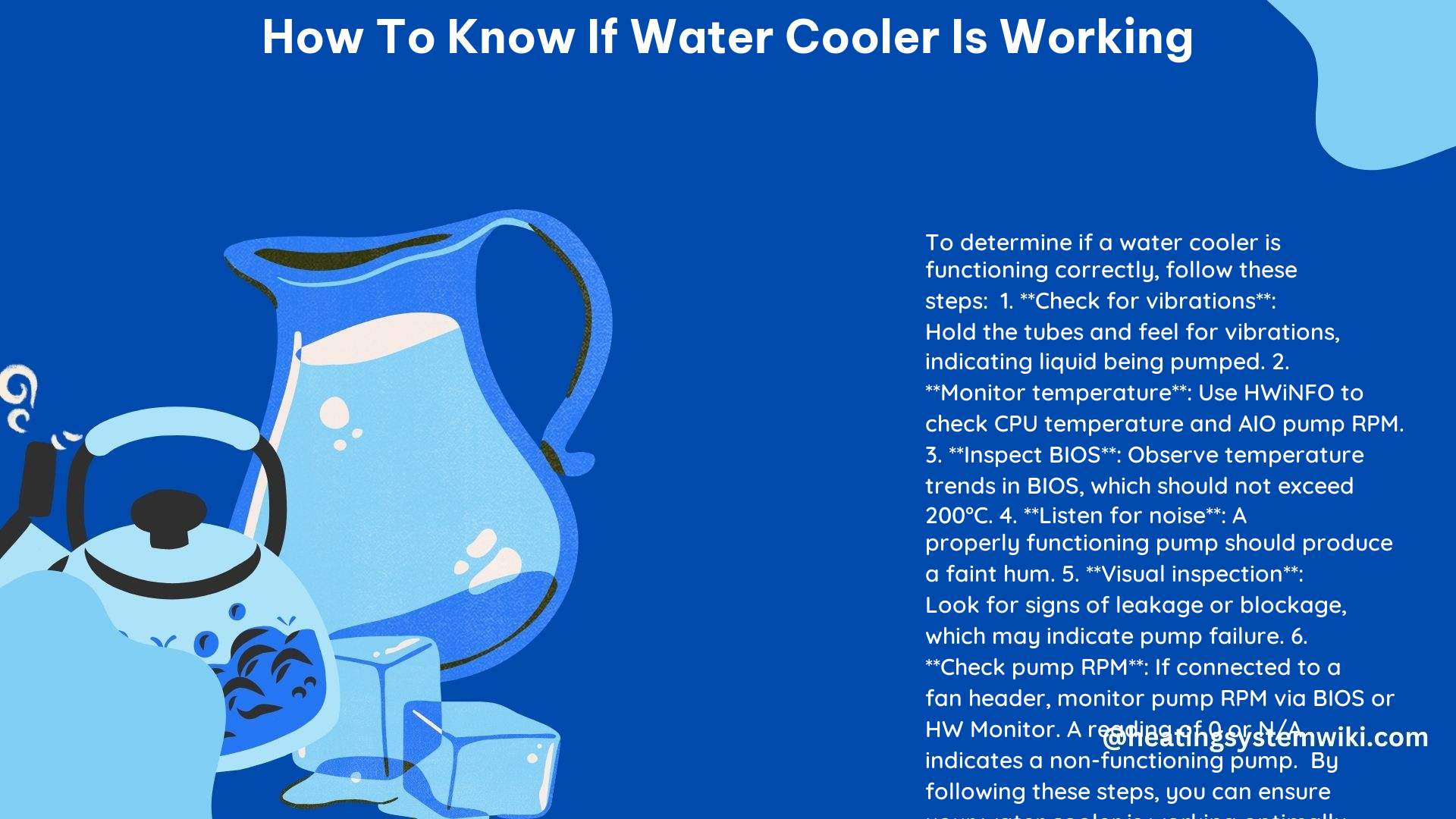Ensuring your water cooler is functioning correctly is crucial for maintaining optimal system performance and preventing potential damage to your components. In this comprehensive guide, we’ll delve into the various techniques and tools you can use to determine if your water cooler is working as intended.
Checking the Pump RPM
The pump RPM (Revolutions Per Minute) is the most accurate way to assess the functionality of your water cooler’s pump. To check the pump RPM, you’ll need to connect the pump cable directly to a fan header on your motherboard. This will allow you to monitor the pump’s speed and ensure it’s operating within the expected range.
If the pump cable is connected to the power supply via a 4-pin Molex to 3-pin fan adapter, you won’t be able to obtain a pump RPM reading. In this case, you’ll need to use specialized software like HW Monitor to check the pump’s performance in the BIOS or within your operating system.
When checking the pump RPM, look for a value that’s consistent with the manufacturer’s specifications. If the pump RPM is displaying 0 or N/A, it’s a clear indication that the pump is not functioning, and a replacement may be necessary.
Feeling for Vibrations in the Pipes

Another way to determine if your water cooler’s pump is working is by feeling for vibrations in the pipes. Gently hold the pipes and pay attention to any subtle vibrations or warmth, which can indicate that the liquid is being actively pumped through the system.
The actual pump itself should also exhibit some degree of vibration, which can be felt by placing your hand near the pump housing. If you don’t feel any vibrations in the pipes or the pump, it could suggest a problem with the pump’s operation.
Monitoring Temperature Differences
Observing the temperature differences between the tubes of your water cooler can provide valuable insights into its performance. On a properly functioning water cooler, the temperature difference between the two tubes should be relatively mild, typically within a few degrees Celsius (or Fahrenheit).
If you notice one tube is significantly warmer than the other, it could indicate an issue with the water cooler’s efficiency, such as a blockage, a malfunctioning pump, or a problem with the cooling block’s contact with the CPU.
Checking the Pump’s Performance in the BIOS
Accessing your system’s BIOS (Basic Input/Output System) can also help you assess the performance of your water cooler’s pump. In the BIOS, you can typically find information about the system’s temperatures, including the CPU temperature, which can be used to gauge the pump’s effectiveness.
If the temperatures are steadily increasing or creeping up, it could be a sign that the pump is not functioning correctly, and you may need to investigate the issue further or consider a replacement.
Specialized Software Monitoring
In addition to the BIOS, you can use specialized software to monitor the performance of your water cooler’s pump. Programs like HW Monitor, AIDA64, or the manufacturer’s own software (e.g., Corsair iCUE, NZXT CAM) can provide detailed information about your system’s temperatures, pump speeds, and other relevant metrics.
These software tools can give you a more comprehensive view of your water cooler’s operation, allowing you to identify any potential issues or deviations from the expected performance.
Troubleshooting Tips
If you suspect your water cooler is not functioning correctly, here are some additional troubleshooting steps you can take:
-
Check for Leaks: Inspect the water cooler’s components, including the tubes, fittings, and the pump itself, for any signs of leakage. Leaks can compromise the cooling system’s performance and potentially damage other components.
-
Ensure Proper Installation: Verify that the water cooler is installed correctly, with the pump and cooling block properly mounted and the tubes routed without any kinks or restrictions.
-
Clean the Cooling Block: Over time, the cooling block may accumulate dust, debris, or thermal paste residue, which can impede heat transfer. Carefully clean the cooling block according to the manufacturer’s instructions.
-
Update Drivers and Firmware: Check for any available driver or firmware updates for your water cooler, as these updates may address known issues or improve performance.
-
Consider Replacing the Pump: If all other troubleshooting steps fail, the pump itself may be the root cause of the issue. In such cases, you may need to replace the pump or the entire water cooler unit.
By following these steps and utilizing the various techniques outlined in this guide, you can effectively determine if your water cooler is working correctly and take the necessary actions to ensure optimal system performance and longevity.
